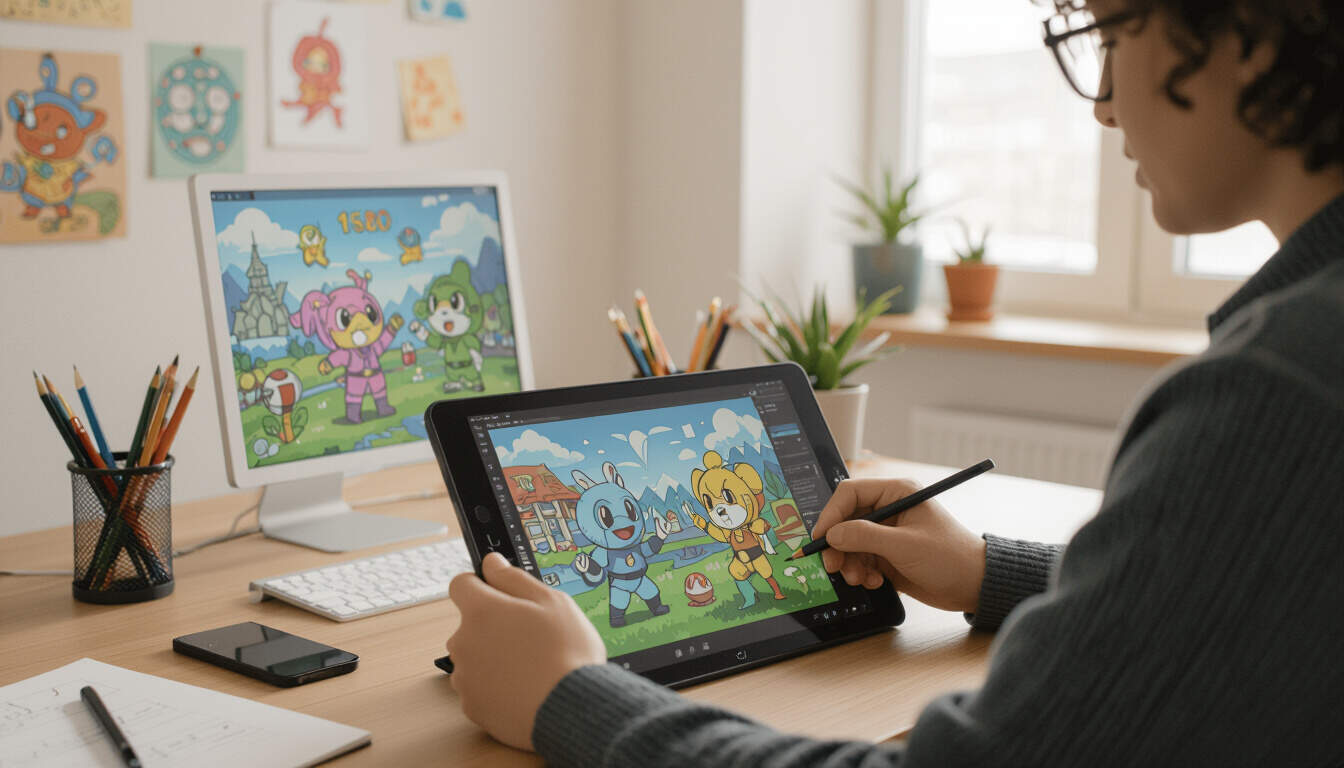Game Design Ideas as a Profitable Side Hustle
 by Max Miller
by Max Miller
Discover how turning game design ideas into a side hustle can provide extra income for aspiring entrepreneurs and young professionals. Learn practical steps to generate ideas, build skills, and monetize your creations in a creative field full of opportunities.

Many people seek ways to earn additional income outside their main jobs, and game design offers a creative path forward. Game design as a side hustle allows individuals to channel their imagination into projects that can be sold or shared online.
One key aspect is generating fresh ideas. For instance, game design often starts with simple concepts like puzzle games or adventure stories that appeal to a wide audience. This approach helps beginners avoid feeling overwhelmed by starting small.
To begin, focus on building essential skills. Platforms like online tutorials provide resources for learning basics such as character development and level creation. Once you have a foundation, experimenting with tools like free software can lead to your first prototypes.
Practical ideas include creating mobile games that solve everyday problems, such as apps for time management or educational challenges. These can be developed during evenings or weekends, fitting easily into busy schedules.
Monetization is crucial for turning hobbies into profitable ventures. Options like selling games on app stores or offering custom designs for clients provide steady income streams. For example, freelance platforms connect creators with businesses needing unique game elements.
Steps to Get Started
First, gather your tools. Basic software for game design is often available at no cost, making it accessible for newcomers. Then, brainstorm themes based on your interests, such as nature or history, to keep the process enjoyable.
Here is a simple list of steps:
- Identify your strengths, like art or storytelling, to shape your ideas.
- Sketch rough drafts on paper or digital tools to visualize concepts.
- Test prototypes with friends for feedback before finalizing.
- Use online communities to share work and gain inspiration.
Over time, refining these ideas can lead to more complex projects. Many successful side hustlers started with basic games and expanded their offerings.
Real-World Examples
Consider someone who turned a passion for board games into digital versions. By developing and selling these online, they built a portfolio that attracted clients. Such stories show how persistence pays off in creative fields.
Challenges may arise, like balancing time with a full-time job. Setting clear goals, such as dedicating specific hours each week, helps maintain progress. Additionally, staying updated with trends ensures your ideas remain relevant.
Networking plays a role too. Joining forums or local groups allows for collaboration and learning from others. This community support can spark new ideas and open doors to opportunities.
As you grow, scaling your side hustle becomes possible. For instance, turning individual game designs into a series can increase earnings. Marketing your work through social media reaches potential customers without much expense.
In practice, tracking your progress is important. Keep a journal of ideas and feedback to refine future projects. This method not only improves your skills but also builds confidence in your abilities.
Ultimately, the satisfaction of seeing your ideas come to life makes the effort worthwhile. Whether you're a young professional or an aspiring entrepreneur, this side hustle offers both financial rewards and personal fulfillment.
To wrap up, remember that starting small and staying consistent leads to success. With dedication, your game design ideas can become a reliable source of extra income.
